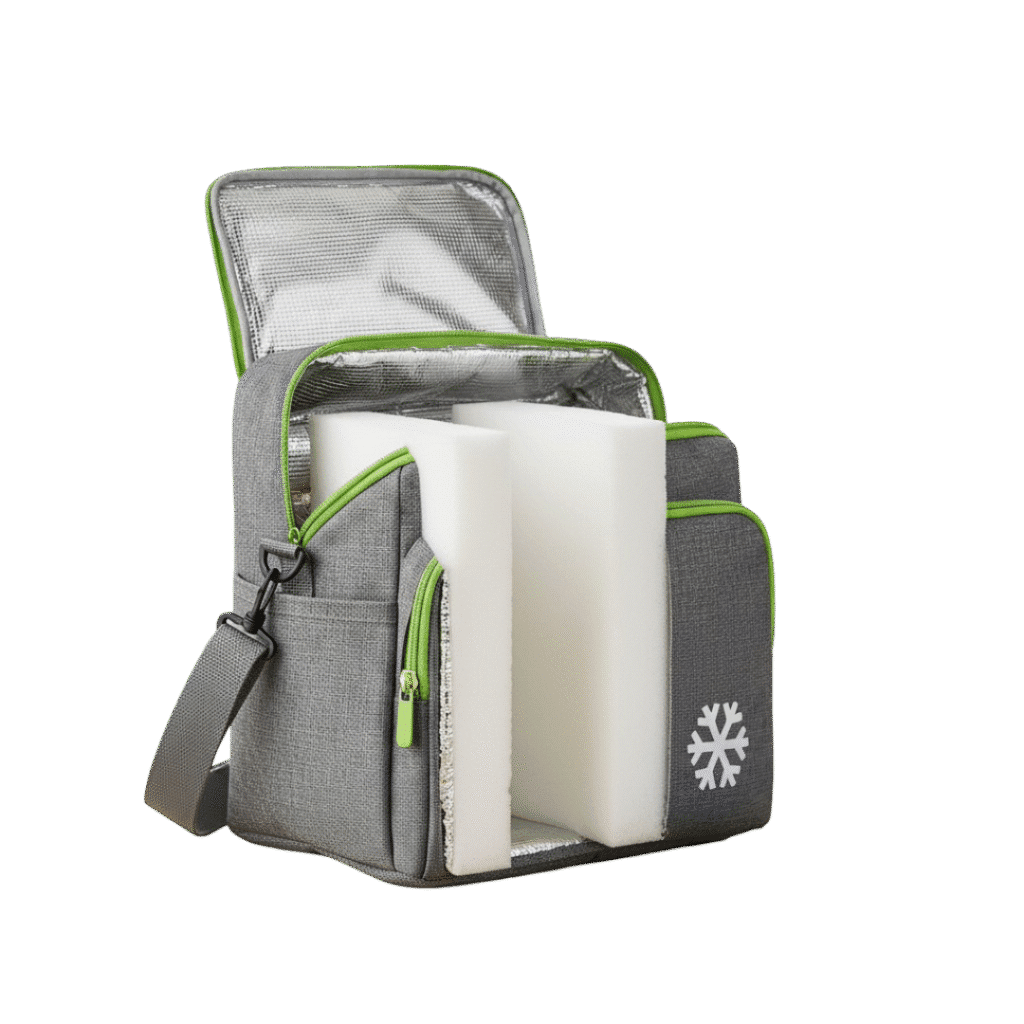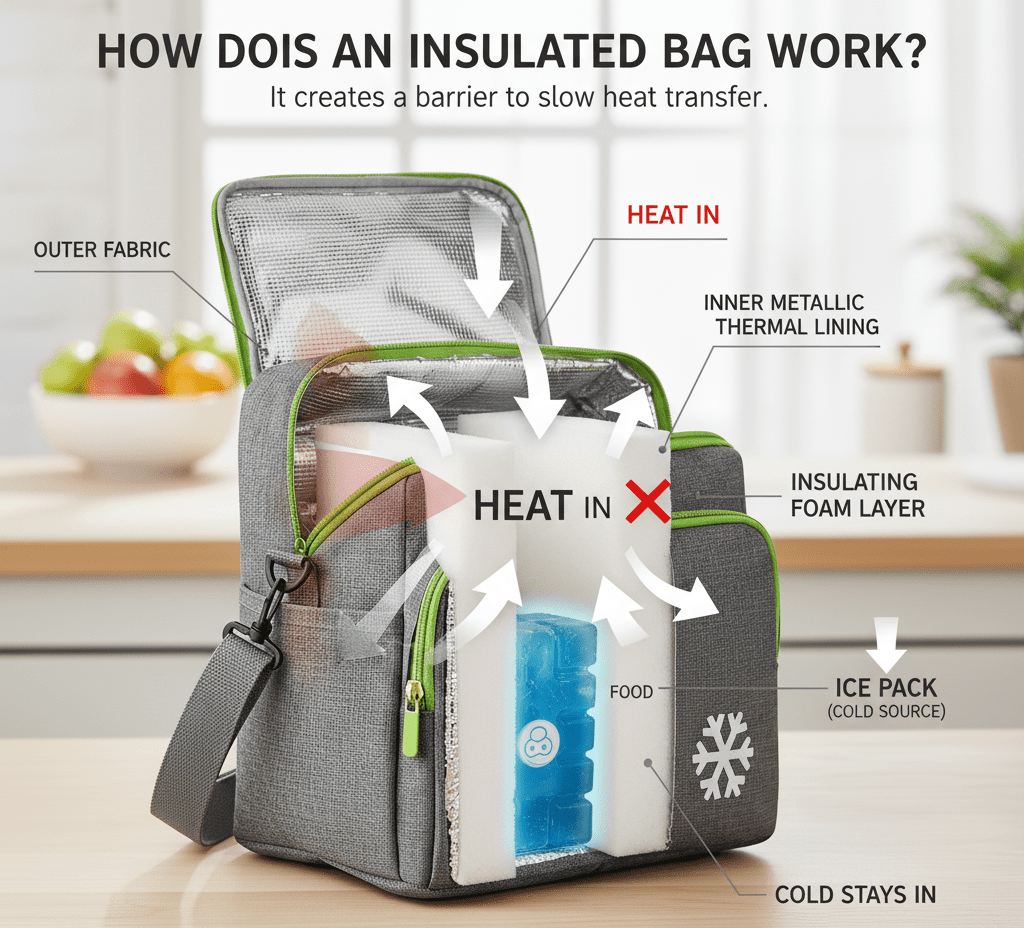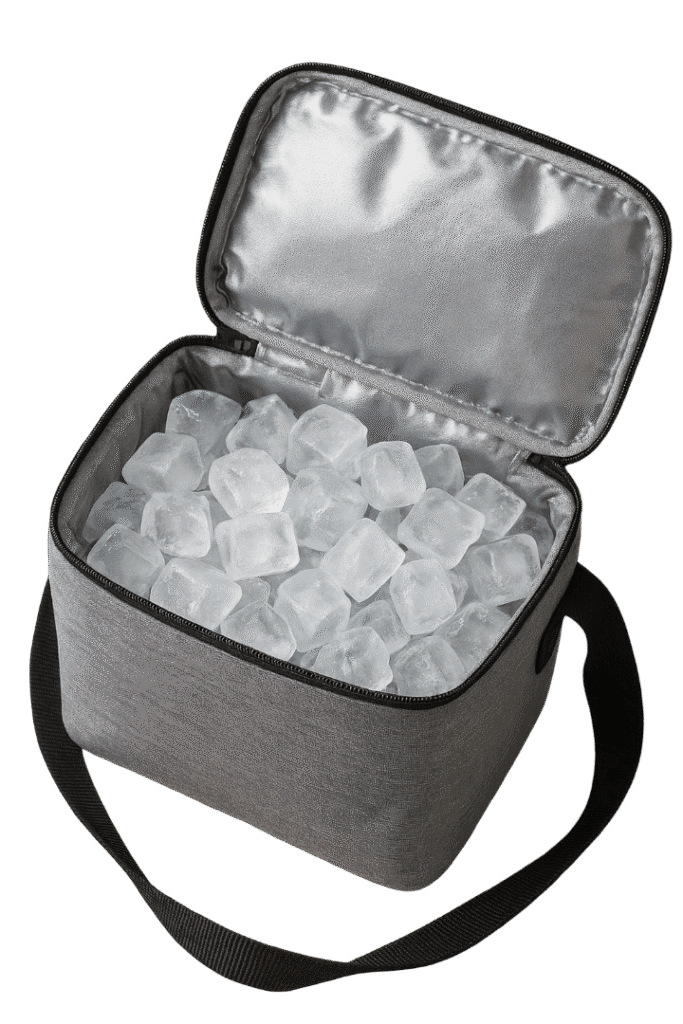Keeping food cold during travel, picnics, or grocery trips is essential for both freshness and food safety. Many people rely on insulated bags, but one common question remains: Does an insulated bag need ice? The short answer — yes, if you want to keep food cold for several hours, adding ice or ice packs is essential.

How Does an Insulated Bag Work?
An insulated bag is designed to reduce heat transfer between the inside and outside environments. It works by combining:
- Thermal insulation layers (foam or reflective aluminum lining) that trap cool air.
- Outer fabric (like nylon or polyester) that adds durability and prevents moisture buildup.
- Zipper seals that reduce air exchange.
However, insulated bags don’t create cold on their own — they only maintain the temperature of what’s inside. That’s why adding ice or cold packs is crucial if you want to keep your food or drinks chilled for hours.

🧺 Do Insulated Bags Need Ice?
Yes insulated bags need ice (or gel packs) to stay cold for extended periods. The insulation acts as a barrier, slowing down the melting of ice and keeping cold air trapped inside. Without ice, the bag will only maintain room temperature items for a short time.
✅ When to Use Ice or Ice Packs
- Grocery shopping: To keep frozen and refrigerated foods safe.
- Picnics or outdoor events: To maintain the freshness of sandwiches, fruit, and drinks.
- Camping or travel: To keep perishables safe for up to 24 hours.
Food delivery: To ensure food safety during transport

🕒 How Long Will Food Stay Cold in an Insulated Bag?
The duration depends on several factors:
Condition | With Ice Packs | Without Ice |
Lightly filled bag | 4–6 hours | 1–2 hours |
Fully packed bag | 8–12 hours | 2–3 hours |
High-quality cooler bag | 12–24 hours | 3–4 hours |
Hot weather (over 90°F / 32°C) | 6–8 hours | 1 hour or less |
🧊 Best Ways to Keep Food Cold in an Insulated Bag
1. Pre-Chill Everything
Start with cold or frozen items — never room-temperature food. The bag works best when it’s already cold inside.
2. Use Ice Packs Instead of Ice Cubes
Reusable gel packs last longer, don’t leak, and won’t make your bag soggy.
👉 Pro Tip: Freeze your gel packs overnight for maximum effectiveness.
3. Add Frozen Bottles of Water
A clever hack is to use frozen water bottles instead of loose ice. They keep the bag cold and provide cold drinking water later.
4. Layer Smartly
Place ice packs or frozen bottles at the bottom and top of the bag for even cooling. Food items should go in between.
5. Limit Bag Opening
Every time you open the bag, warm air gets in. Keep it closed as much as possible to maintain the chill.
6. Use Reflective Liners or Towels
If you’re out in the sun, wrap the insulated bag in a towel or reflective blanket for extra protection.
🧃 Best Ice Packs for Insulated Bags
Here are a few types of ice packs that perform well:
- Gel Ice Packs: Long-lasting and reusable — ideal for groceries or work lunches.
- Dry Ice Packs: Extremely cold but best for shipping frozen items (handle with care).
- Reusable Plastic Blocks: Durable and great for daily use.
- Homemade Ice Packs: Mix water and rubbing alcohol in a zip bag for a flexible DIY option.
⚠️ Food Safety Tip
Perishable foods should not stay above 40°F (4°C) for more than 2 hours (or 1 hour in hot weather). Always add ice or ice packs if you’re carrying meat, dairy, or seafood.
If you’re using the bag for groceries, go straight home after shopping — don’t leave food sitting in a warm car.
🧳 Insulated Bag vs. Cooler Box: Which Keeps Food Cold Longer?
Feature | Insulated Bag | Hard Cooler |
Portability | Lightweight, easy to carry | Heavy and bulky |
Cooling time | 6–12 hours (with ice) | Up to 48 hours (with ice) |
Best for | Lunches, picnics, groceries | Camping, road trips, long storage |
Cleaning | Easy to wash | Requires rinsing and drying |